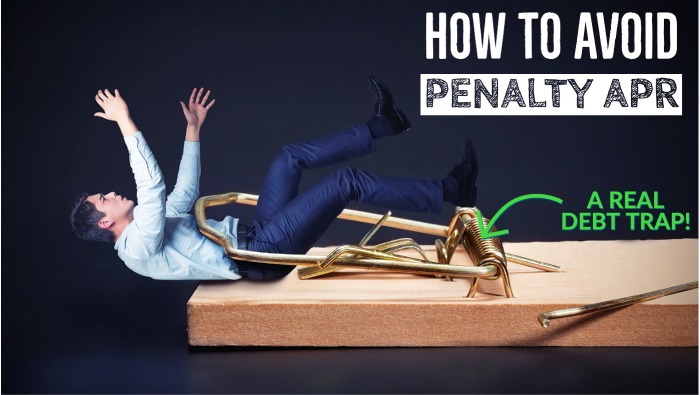The other day my friend was upset about her credit card bill. She said, “It’s so hard to pay it off when you’re paying a 32% interest rate.” Her rate was so high, it sounded like a penalty APR to me. Let me explain.
Since we’ve been friends since our youth, I knew it was okay to ask her a few questions:
Me: “Are you paying 32% in credit card interest?”
My Friend: “Yes.”
Me: “Did you miss a payment or something, because that sounds like a penalty APR?”
My Friend: “Yes, I may have missed some payments.”
What’s a Penalty APR?
It’s not like a penalty box in hockey. A penalty APR is usually the highest rate that your credit card company will charge you. And you’ll probably find it on your credit card disclosure where they explain how your credit card works (charges, fees, interest).
Every company has the freedom to set its own interest charges, which is often based on the prime rate. The prime rate is the interest rate banks agree to lend consumers.
A penalty APR is something you may see in your credit card disclosure. For example a credit card offer I received had a Penalty APR listed of 29.99%. It isn’t a fixed value though because they also noted the rate could vary based on the prime rate. The disclosure also explains when a penalty APR could go into effect. It is typically when you have a returned payment or make a late payment.
How Long Does a Penalty APR Last?
It depends. For example, they may apply it for six months and longer depending on your creditworthiness or payment history. The length of time is at the discretion of your financial institution.
How to Avoid One

The best way to avoid paying this ridiculously high interest rate is to pay your bill on time. If you can’t pay it, reach out to the financial institution and discuss your financial situation. Depending on your circumstances, they may be able to work with you on an alternative payment plan. This could help you avoid the additional charges/fees. And help to give you more peace of mind about managing your bills during a difficult time.



